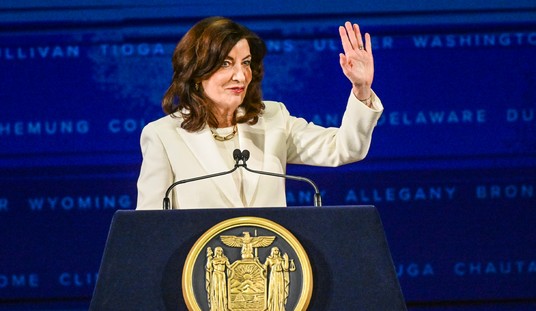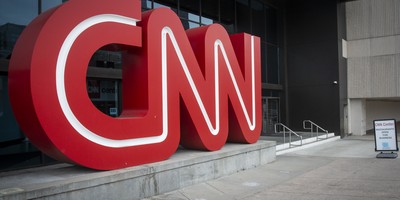Reading deeply into any specific data point from a poll conducted 18 months in advance of the next national election is obvious silliness, so please just consider this post a casual heads-up. One of the biggest drivers of last year's 'blue wave' midterm election cycle was Democrats' double-digit advantage on the important metric of voter enthusiasm. Unsurprisingly, with Republicans in charge of the House, Senate and presidency, Democratic partisans were highly invested in turning out to break the GOP's electoral stranglehold on the federal government's levers of power. They exploited that edge to gain 40 House seats, half-a-dozen governorships, and hundreds of state-level legislative seats.
Since the conclusion of that cycle, we've seen a mixed bag of special election results, including a handful of pro-GOP flips at the state level, an upset conservative victory in Wisconsin's Supreme Court election, and one red-to-blue shift, as well. The regularly-scheduled off-year elections in New Jersey and especially Virginia this coming November may provide politicos with a few more clues as to how the national environment may be shaping up in advance of 2020, but a new NBC/Wall Street Journal survey also flags a possible trend that's worth following. In the freshly-released poll, Republicans have erased Democrats' aforementioned enthusiasm gap:
The D enthusiasm advantage was why the Ds did so well in the 2107/2018 special elections. It’s a big part of why they took the House in 2018. If the advantage is gone, it has huge implications for the 2020 race. https://t.co/HUdLQ4bysK
— Ari Fleischer (@AriFleischer) May 6, 2019
Democrats had two advantages that fueled their midterm victories in November 2018 — an edge in enthusiasm and success with independent voters. Six months later, just one of those advantages remains. In the latest NBC News/Wall Street Journal poll, 75 percent of Republican registered voters say they have high interest in the 2020 presidential election — registering a “9” or “10” on a 10-point scale — versus 73 percent of Democratic voters who say the same thing. That’s quite a change from the 2018 cycle, when Democrats held a double-digit lead on this question until the last two months before the election, when the GOP closed the gap but still trailed the Dems in enthusiasm. It’s just one poll, but the numbers are a reminder that presidential elections are always different than midterm cycles.
Recommended
NBC's story goes on to project "through the roof" 2020 turnout overall, based on the data. The potential good news for the Trump campaign is obvious: If Republicans reach approximate parity with Democrats on eagerness to vote, the GOP would neutralize a major factor that favored the opposition party in the midterms. But the president still has a serious issue among independent voters, who broke for him by a narrow but crucial four-point margin in 2016. He will not win a second term if these numbers are even close to accurate by next fall:
His approval rating among indies is 38 percent (versus 46 percent overall); just 34 percent have a positive view of him (versus 39 percent overall); and only a combined 28 percent of them say they are enthusiastic or comfortable when it comes to his re-election (versus 41 percent overall). But the danger for Democrats: Independents aren’t with them on impeachment of Trump. A plurality of indies — 45 percent — say Congress should not hold impeachment hearings, compared with 19 percent of them who believe there’s enough evidence to begin impeachment proceedings now.
The impeachment numbers underscore why, in spite of all the heated rhetoric and table pounding, House Democratic leaders don't want to touch the I-word. Setting that issue aside, the president simply must improve his standing among unaffiliated voters if he wants to secure re-election. His performance on the economy is undoubtedly looking like a major asset in pursuing that task, but so far, it hasn't been enough. Trump's most ardent fans and defenders are frequently willing to defend or even celebrate the president's excesses and 'unpresidential' comportment, but Trump too often damages himself with such things. Nobody is going to fully or even substantially change his habits at this point, but even taming some of his most self-sabotaging impulses at the margins could help make some headway.
So could a newsworthy bipartisan achievement (I still believe criminal justice reform deserved far more attention and approbation that it received), which is likely why the president has approached Democratic leaders on a giant infrastructure adventure. Consider me officially skeptical that (a) "Chuck and Nancy" would ever allow Trump to notch a political victory to pad his cross-partisan appeal leading up to an election, even if it meant spending $2 trillion on a long-held Democratic priority, and (b) the two sides could come together on pay-fors, a major potential sticking point that was punted into the future. We shall see. I'll leave you with two hopeful notes from Trump's perspective -- one on turnout demographics (I've mentioned it before), and the other contrasting President Trump and Obama's respective performances in Gallup's data during the month of May leading up to their re-election years:
Per new Census data, 12.9 million eligible women w/ degrees didn't vote in 2018. Meanwhile, *41.8 million* men without degrees stayed home. Upside: Trump. https://t.co/aw29WBNb1m
— Dave Wasserman (@Redistrict) April 24, 2019
The same @Gallup poll had Obama’s approval rating at 44% to start May of his presidency’s third year.
— Frank Luntz (@FrankLuntz) May 6, 2019
???? https://t.co/vieBPnb7Fm https://t.co/ihwUY9Kc4t
Allahpundit also notes that Gallup's tracker was in the field before the latest superb jobs report was released, and that another national poll also has Trump hitting 46 percent. These are all fleeting indicators, of course, but the bump looks real -- at least for now.

























Join the conversation as a VIP Member